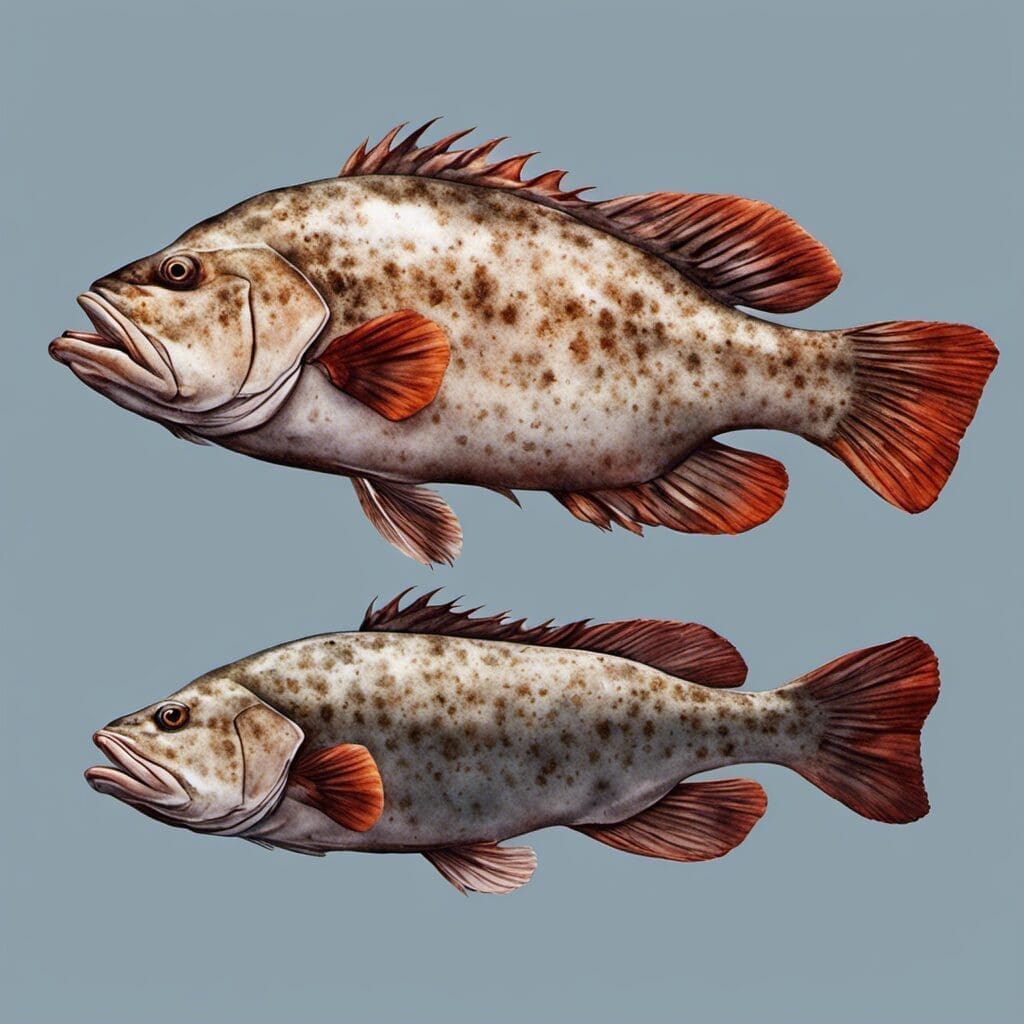Introduction
The Grouper or locally known as the Hamour, is a species of fish that belongs to the Serranidae family. The hamour fish is a variety of grouper from the Arabian Gulf and North Western India.
Conservation Status
Presently, the Grouper or Hamour is classified as “Vulnerable” on a global level, contending with excessive fishing and habitat pollution. Several conservation efforts are currently underway, particularly in the Arabian Gulf and North Western India, including strict regulation of fishing practices and the development of marine reserves and sanctuaries.
Statistics
| Statistic | Average | Range |
|---|---|---|
| Length | 100 cm | 50 cm – 150 cm |
| Weight | 15 kg | 5 kg – 100 kg |
| Average Lifespan | 12 years | |
| Temperature Range | 16°C - 28°C |
Distribution
Groupers are widely distributed throughout the Arabian Gulf and North Western India. Moreover, they also inhabit some parts of the South China Sea. They tend to migrate offshore over the deeper reefs for spawning between July and August.
Habitats
Being a saltwater fish, the Grouper thrives in marine environments within a depth range of 10 to 100 meters. The species tends to prefer warmer climates, with a temperature range of 16°C - 28°C.
When and Where to See
Groupers tend to be more active during the warmer months, specifically from late spring to early autumn. Nighttime is generally when these fishes are most active.
Best Fishing Locations
The top places for fishing Groupers are as follows:
- Persian Gulf, United Arab Emirates
- Around the Andaman and Nicobar islands, India
- South China Sea, Near Hong Kong and Taiwan
- Arabian Sea, Near Oman
How to Catch
Groupers are partial to cut bait, live bait fish, and shiny jigs. For conventional fishing, bottom fishing over the reefs is the best technique. The best time to catch them is during their active period in the warmer months, particularly at night.
Identification Guide
Groupers possess a stout body and a large mouth. They are seen in a variety of colors and patterns, but are usually darkly colored. Although similar to the Sea Bass, Groupers can be distinguished by their rounded pectoral and caudal fins.
Culinary
How to Cook
Groupers are very popular in Asian dishes due to their firm texture and mild flavor. It can be grilled, pan-fried, or used in a hearty seafood stew.
Taste Profile
Groupers have a mild flavor that is slightly sweet with a hint of a savory note.
Nutritional Information
Groupers are low in fat and high in protein. They are also a good source of Vitamins B6 and B12, as well as Omega-3 fatty acids.
Recipes
Most popular recipes include Asian Grouper Stew, Grilled Grouper with Lemon & Herbs, and Pan-Fried Grouper with Citrus Sauce.
Additional Information
Behavior
Groupers are solitary creatures that prefer to live in rocky areas or hide among sponges and corals. They typically eat other fishes and invertebrates.
Predators and Threats
Natural predators of the Grouper include larger fish like Sharks and Barracudas. Overfishing and habitat degradation due to pollution continue to pose significant human-induced threats.
Cultural/ Historical Significance
In the United Arab Emirates, the Grouper or Hamour is a symbol of the Emirates’ rich coastal heritage and plays a central role in traditional coastal community livelihoods.
References and Further Reading
The most recommended sources and readings include:

